Editor of this issue: Violeta Kelertas, Univ. of Illinois at Chicago
Copyright © 1992 LITUANUS Foundation, Inc.

|
LITUANUS
LITHUANIAN QUARTERLY JOURNAL OF ARTS AND SCIENCES
Volume 38,
No.4 - Winter 1992
Editor of this issue: Violeta Kelertas, Univ. of Illinois at Chicago ISSN 0024-5089
Copyright © 1992 LITUANUS Foundation, Inc. |

|
KAZYS DAUGĖLA: PHOTOGRAPHS OF THE LITHUANIAN DP CAMPS IN POST-WAR GERMANY
"Refugees from Lithuania" (Išeiviai iš Lietuvos) is the title of a book of photographs by Kazys Daugėla (Bedford, NH), published in 1992 by Mintis in Vilnius, Lithuania.
This beautifully produced volume gives the reader a pictorial glimpse of the life and fate of the Lithuanians who fled their native land at the approach of the Soviet Army during World War II.
Kazys Daugėla, a refugee himself, recorded their wanderings on film. After the introductory series of photographs of the landscape and the people of the pre-war Lithuania, the photographer presents a sensitive documentary about the plight of the refugees as they moved westward into an unknown future. The photographer tells the story also in words:
***
This book tells stories of people who left their native land. They left it not of their own will. They did not flee seeking a better life. They were not enticed by friends or relatives abroad. They were not hiding from punishment, because they were not guilty.
They were healthy and sickly, adults and children, pregnant women, infants wrapped in baby blankets people from the plow and school bench, from the church altar, office desk, university chair and theater stage.
They left their homes herded by fear, which like a thief in the night stole into their midst and spread throughout the land. Europe burned in the flames of war, and Lithuania was flooded by strangers who did not know God's Ten Commandments.
The Golgotha of the Lithuanian people began on June 15, 1940, when the caterpillar tracks of Stalin's tanks rolled across Lithuania's frontier and trains crammed with people arrested in the night lumbered into the eastern gulags.
After a year, as the war fronts changed. Hitler's armies occupied Lithuania. The genocidal regime dug massive graves and filled the Reich's concentration camps with innocent citizens of Lithuania.
Finally, as the Red Army began to near Lithuania through breached German fronts for the second time, fear chased people from their homes in one direction the west.
Lithuanians fled from the Soviet regime with which they had become familiar during the first occupation. Although bombs fell and cities burned in the west, those who chose the western escape route believed they would reach Allied-occupied territories.
The war ended, German concentration camp gates creaked open. Thousands of workers mobilized for the war effort returned to their freed homelands. But the Lithuanian s remained on the western side of the Iron Curtain in German zones divided among three western Allies, becoming uprooted, homeless, strangers among strangers.
As the war ended, the refugees began to be assembled into camps. In 1948, there were about 60,000 Lithuanians in West Germany, about 1,400 in Austria, a few in the Scandinavian countries, France and Italy. The Allies named them Displaced Persons, abbreviated "DP". Camps of various sizes were created in abandoned warehouses, former German military bases, barracks and even stables.
In this album are photographs of the 1945-1949 period, in them the life of the refugees in Bavaria, the Kempten Camp, which housed about 1,100 Lithuanians.
The moving of the displaced into the camps was ordinary. Wrapping what wealth would fit into bundles or suitcases, we piled them into carts or lifted them to our shoulders and retreated from the cities and provincial corners into meeting places where the Allies had promised shelter and food.
With a glimpse, you could recognize what these people did in their homeland. A shearling coat on his back, high boots on his feet, his fortune bundled in a patterned blanket, his fertile farm's fields left behind, a middle-aged man trudged across the camp courtyard. After him followed the mistress of the homestead, a white scarf around her head and a pair of pillows covered in handsome linen under her arm, the remainders of her dowry abandoned in her parlor. Dressed for Sunday with fedora and necktie, a man pushed a loaded cart; he could have been the head of some department or a teacher. At his side walked his wife with an infant in her arms. All rolled into the camp square with whatever worldly goods they could carry as they abandoned their homes. Sad glances followed a man who carried his 80-year-old grandmother into the camp's quarters. A distric-seat engineer's wealth fit on a two-wheeled cart, pulled by his daughter and pushed by his wife. From the glittering buttons on his coat and missing epaulets, you recognized a man who had served in the army or police, while the darkly dressed and collared priest gazed around his newly gathered parishioners.
Several trucks with old furniture donated by the Germans rolled into the square. Life in the camp began when we entered the accommodations of an old stone building.
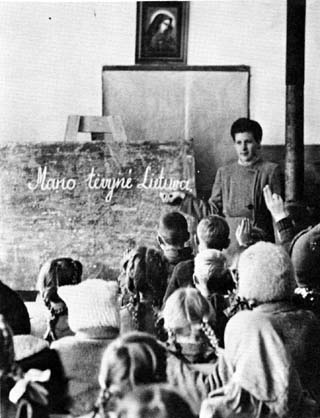
Elementary School class.
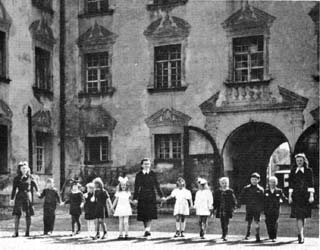
In the camp yard
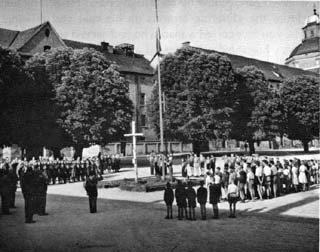
Camp festivities
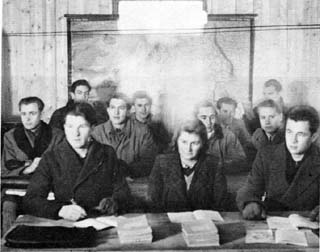
Classroom work in winter
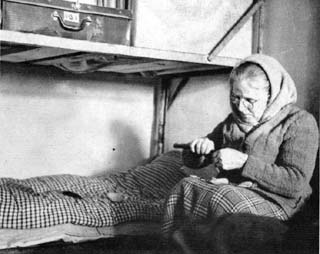
Comer other own
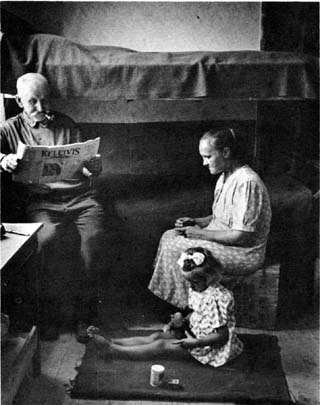
Grandparents
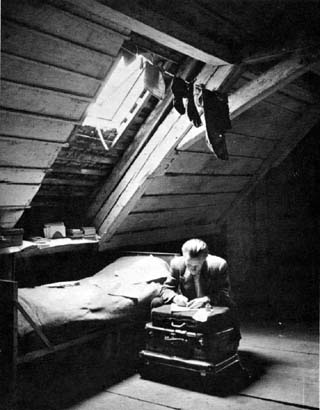
Teacher's quarters
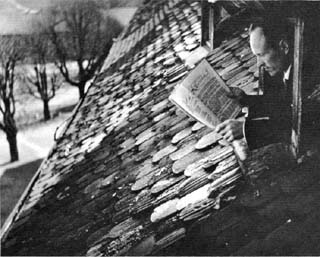
Garret window
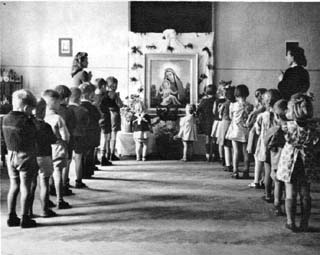
Morning prayer in kindergarden
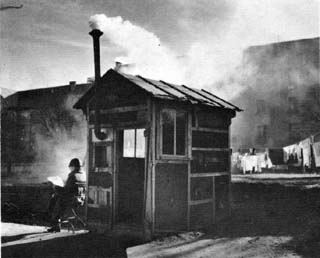
Camp Gatehouse
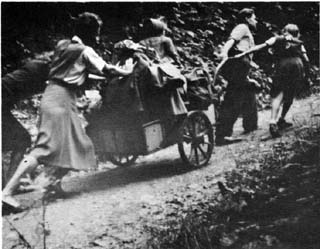
In the Alps
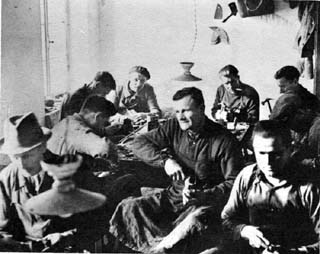
Cobler's artel
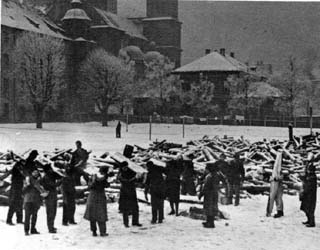
Firewood Preparation duty
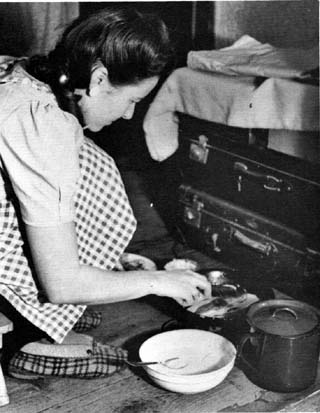
"Kitchen on the floor"
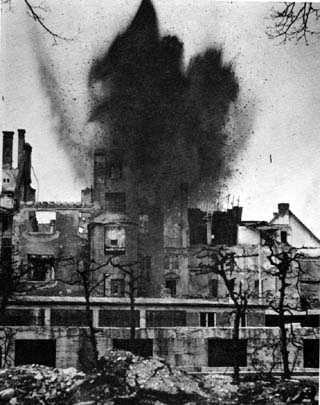
"Although bombs fell and cities burned in the West, those who chose the western escape route believed they would reach Allied-occupied territories"